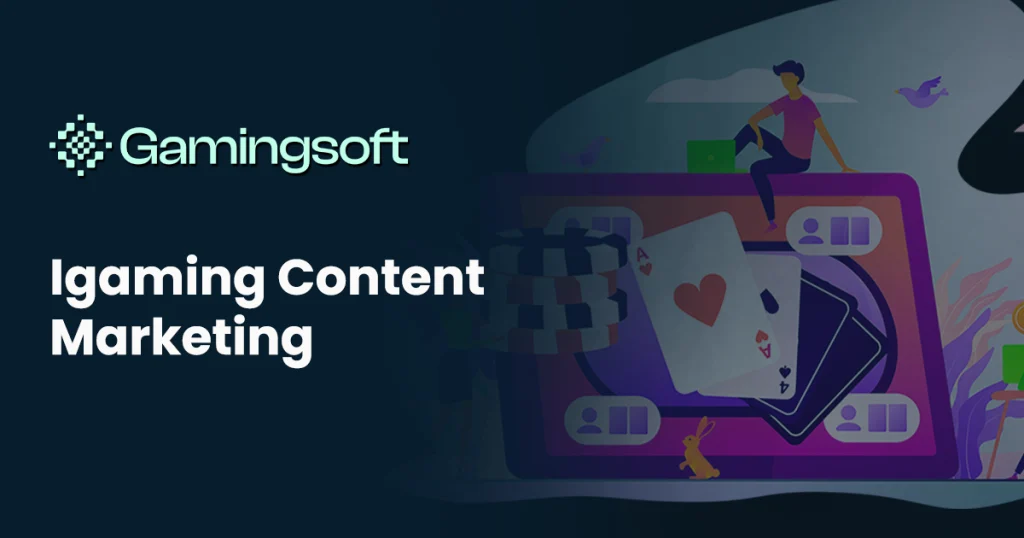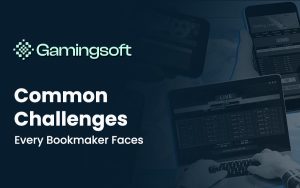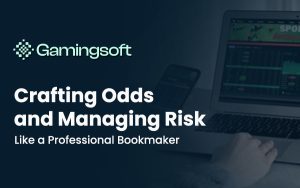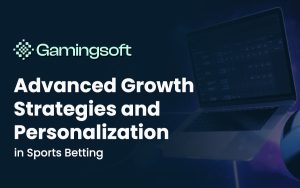iGaming content marketing remains one of the most powerful long-term growth strategies. But many casino operators still underestimate how effective storytelling, SEO alignment, and brand consistency can directly influence player trust and retention.
Unlike traditional advertising, content marketing doesn’t just push promotions—it builds a foundation of authority. For online casinos and iGaming platforms, this approach helps bridge the gap between user intent and brand experience, allowing operators to stand out in a saturated digital landscape.
By understanding what players are looking for, how they interact with your brand, and what keeps them returning, you can craft content that drives engagement, loyalty, and conversions. This is where a refined iGaming content marketing strategy becomes not just useful—but essential for sustainable success.
the Role of Content Marketing in iGaming
At its core, content marketing in iGaming serves a dual purpose: to attract and educate players while subtly guiding them toward conversion. Players are increasingly selective; they look for trustworthy platforms that offer not only games but also insights, updates, and personalized recommendations.
This means that effective content isn’t about publishing random blog posts—it’s about designing a player journey. Each piece of content should match where the audience stands in the funnel: awareness, consideration, or decision.
For instance, a beginner might search for “how to start playing live casino games,” while a loyal player might look for “advanced betting strategies.” Both queries deserve different tones, depth, and CTAs, yet contribute to the same brand narrative.
A strong iGaming content marketing plan also considers localization and cultural relevance. What appeals to players in Southeast Asia may differ drastically from those in Europe or Latin America. Incorporating localized insights and even language nuances (as discussed in “Translation Royale’s study on contextual marketing“) can dramatically improve player connection and reduce bounce rates.
Building an Effective iGaming Content Strategy
Creating a strong iGaming content marketing strategy isn’t just about producing articles regularly — it’s about developing a system that ties your brand message to measurable outcomes. An effective strategy begins with clarity: knowing who you’re speaking to, what they care about, and why your content deserves their attention.
For most casino operators, content marketing often starts and stops at game announcements or bonus updates. While these are necessary, they barely scratch the surface of what builds real engagement. To compete with established platforms, iGaming brands must treat content as an ecosystem, not an isolated effort. That means aligning blog content, SEO keywords, social media, email newsletters, and in-platform experiences into one continuous player narrative.
1. Define Audience Personas Based on Player Behavior
Every piece of iGaming content should be rooted in data — especially behavioral insights. Instead of segmenting players by demographics alone, go deeper into psychographics and motivation triggers.
Ask: Why do they play? Are they seeking entertainment, competition, or profit?
For example, a casual player might respond well to content that emphasizes fun and simplicity, while a high-roller may prefer thought-leadership content highlighting VIP programs or exclusive tables. This differentiation allows you to personalize not just your tone but also your internal linking flow — guiding readers to relevant topics like “How to Attract New Players to an Online Casino” or advanced platform management insights such as “Key Strategies for Running an iGaming Platform“.
2. Map Content to the Player Funnel
In iGaming, your funnel is more complex than in typical e-commerce. Players go through cyclical stages — discovery, registration, engagement, and retention. Your content should reflect this evolution.
- Awareness stage: Articles that explain industry trends or guide players toward the best casino experiences help establish authority.
- Consideration stage: Case studies, game comparisons, or expert insights build credibility.
- Decision stage: Conversion-focused pieces such as “top casino bonuses” or “trusted payment methods” drive sign-ups and deposits.
The secret is balance — ensuring that each funnel stage connects naturally to the next. When optimized with internal links and schema markup, even evergreen content can continuously generate qualified leads.
3. Emphasize Brand Storytelling and Differentiation
The iGaming sector is saturated with platforms offering similar games and bonuses. What makes one brand stand out isn’t the number of slots available — it’s the story behind the experience. Content marketing gives operators a way to tell that story authentically.
Your content should reinforce what your brand stands for — whether it’s innovation, security, fairness, or entertainment value. By weaving brand values into long-form content and social narratives, you can create emotional resonance that short-term campaigns rarely achieve. A great example is how certain casino brands use player success stories or behind-the-scenes content to humanize their operations.
4. Blend SEO with Creativity
A common mistake in casino content marketing is over-optimizing for search engines while neglecting user experience. The best-performing iGaming articles are both keyword-driven and human-centric.
Your keyword (igaming content marketing) should guide the narrative, not dominate it. Use it naturally in context — within headlines, subtopics, and image alt texts — without making it sound forced.
SEO research should also influence content clustering. For instance, grouping your pillar page on iGaming content marketing with related topics such as “Effective Strategies to Elevate Your Casino Brand” and “Personalized Experiences in iGaming Content” can help search engines understand your topical authority.
5. Harness Data to Continuously Optimize
Data transforms intuition into precision. Track how each piece performs — not just in traffic, but in player engagement metrics such as dwell time, conversion rate, and return visits.
Insights from analytics tools can reveal which articles attract high-value players or which CTAs generate better sign-ups. Over time, you can refine your topics and formats accordingly.
An academic perspective even suggests that the integration of contextual content and behavioral data can enhance long-term retention rates, as noted in this recent journal study on player engagement.

Content Distribution & Channel Optimization for iGaming Brands
Even the best content will underperform if it doesn’t reach the right audience. In the iGaming space, content distribution is where most operators lose momentum. They invest heavily in production but neglect promotion — yet in a saturated ecosystem, visibility is half the battle.
The key to scaling impact lies in using the right distribution mix. For iGaming brands, that mix should balance owned, earned, and paid channels, with each one optimized to serve a different purpose in the player’s journey.
1. Owned Media: Building a Self-Sustaining Content Engine
Owned media — such as your website, blog, newsletters, and app notifications — are the foundation of your distribution ecosystem. They’re fully under your control, allowing you to create consistent narratives and guide users from awareness to conversion.
Use your blog as a central hub for authority-driven content. Crosslink key pages such as strategy articles, feature releases, and updates about AI-integrated gaming experiences. When structured properly, these links don’t just improve navigation; they distribute link equity across your domain, strengthening your SEO performance over time.
2. Earned Media: Amplifying Reach Through Networks
Earned media gives your brand external validation — mentions, guest posts, PR, affiliate features, or even user-generated content. These signals tell search engines and potential players that your platform is trusted by others.
In the iGaming world, strategic collaboration with affiliate marketers, influencers, and content syndication partners can significantly multiply your brand’s exposure. For instance, co-authoring educational posts or contributing to recognized publications (as discussed in this Wiley study on online behavioral content) reinforces authority and connects your casino brand with credible information sources.
The goal is to earn visibility organically while strengthening your backlink profile — a combination that enhances both SEO and brand recognition.
3. Paid Media: Smart Investment for Targeted Impact
While organic visibility is invaluable, paid distribution remains a tactical weapon for scaling quickly. However, rather than broad campaigns, iGaming brands benefit from micro-targeted ads focused on specific content pillars.
Promoting high-performing articles, player guides, or platform updates on networks like Meta, Google Display, and niche gaming communities helps push your message to high-intent audiences. The trick is alignment: paid traffic should always land on optimized, conversion-ready pages — not generic homepages.
Retargeting also plays a crucial role here. By serving relevant content to users who previously visited your site but didn’t convert, you create a sense of continuity and brand recall, which often results in better retention metrics.
4. Social Channels and Community Engagement
Social media is no longer a side channel — it’s where player relationships begin. Platforms like X (Twitter), Telegram, and Discord are powerful for building real-time engagement loops.
Instead of posting promotional banners, focus on educational threads, industry commentary, and micro-content snippets that extend the life of your main articles. For instance, a blog post about content marketing strategy can be broken down into tweet-sized insights or short videos discussing storytelling in iGaming.
Community-driven engagement ensures two-way communication. Over time, these conversations strengthen your credibility and foster brand advocates — a currency far more valuable than simple clicks.
Integrating AI and Data-Driven Insights into iGaming Content Marketing
As the iGaming landscape evolves, artificial intelligence has moved from being a “nice-to-have” feature to becoming a core component of modern content marketing. Today’s players demand personalization — not just in the games they play, but in the stories they read and the offers they receive. This shift means your content must adapt to each player’s context in real time, and that’s where AI-driven systems shine.
AI for Personalization and Predictive Targeting
By integrating AI into your content strategy, you can deliver articles, guides, and recommendations tailored to user behavior. For instance, machine learning algorithms can analyze a player’s browsing habits, favorite game types, or spending patterns, and automatically surface the most relevant content.
This approach doesn’t just improve engagement — it builds trust. Players begin to see your platform not as another casino site, but as a brand that understands their motivations. Over time, this leads to stronger retention and higher lifetime value.
The beauty of AI-powered iGaming content marketing lies in its scalability. Once the system learns, it continues optimizing itself — meaning your content engine grows smarter, faster, and more effective with each interaction.
Leveraging Data for Smarter Storytelling
Beyond AI automation, data itself is a storyteller. Analytics tools can reveal what truly resonates with players — which topics drive traffic, which formats increase session time, and which content triggers sign-ups.
By combining these insights with human creativity, brands can move beyond guesswork and design campaigns that connect logically and emotionally. For example, tracking engagement across different regions can help localize tone and messaging for Southeast Asia versus Europe, ensuring that each audience segment receives content that feels native and authentic.
The brands that thrive in this space are those that use data not to replace intuition, but to refine it — making every decision evidence-based.
Future Trends: The Convergence of Content, Experience, and AI
The next era of iGaming content marketing will blur the line between marketing and gameplay. Imagine content that responds dynamically to player outcomes — tutorials that adapt after a loss, bonus stories that trigger after milestones, or blog recommendations synced to in-game achievements.
As AI continues to evolve, it will allow content teams to experiment with generative narratives, interactive tutorials, and voice-driven personalization — creating seamless bridges between entertainment and education.
Forward-thinking brands are already exploring these models, integrating live data feeds, gamified learning experiences, and content that evolves in sync with user behavior. For operators, the message is clear: the future of iGaming content lies at the intersection of creativity, data, and automation.
Conclusion: Powering the Next Wave of iGaming Engagement
Content marketing in iGaming has never been about volume — it’s about precision, purpose, and timing. By merging SEO fundamentals with storytelling, data analytics, and AI-driven personalization, operators can transform their platforms into living ecosystems of engagement.
The brands that will lead the next decade of digital gaming are those that view content not as a cost center, but as a growth engine — a system that builds trust, nurtures loyalty, and keeps players returning for more.
If you’re ready to elevate your casino platform and harness the full potential of AI-powered engagement, explore GamingSoft’s AI Live Casino solutions. From real-time data intelligence to immersive player experiences, it’s designed to help you turn strategy into sustained success.






